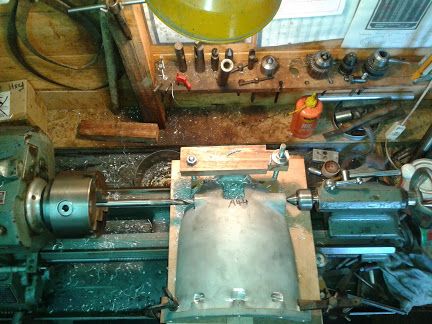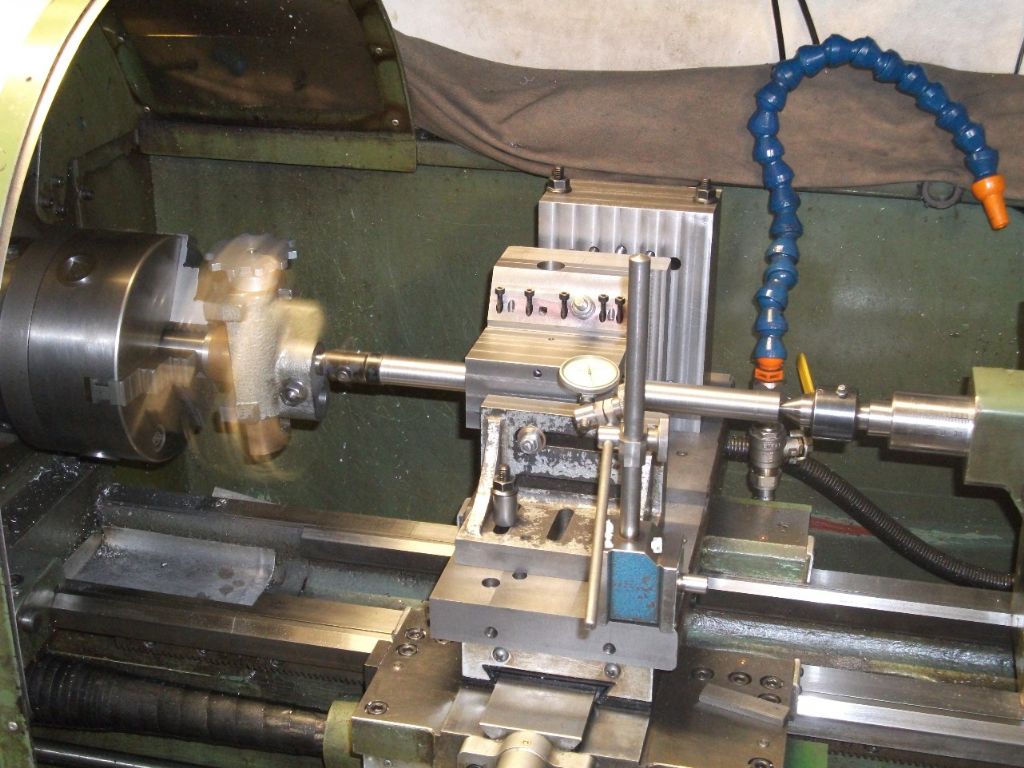I'd go for a bit of 35mm bar as you are more likely to pick that up from a local stockholder than imperial sizes. At 35mm it will fit up your spindle so easy to face off and pop a ctr drill hole in the end. I could also be used as a single point tool in the same way by drilling th eend for a toolbit, I have found this useful on several occasions to open up holes enough to get a between ctrs bar down.
There does come a point where a larger dia bar is worth having as just like normal turning if you have a lot of toolbit sticking out the bar it is more likely to chatter than the same size toolbit just protruding from a larger dia bar.
Personally I tend to use a square tool bit either 3/16 or 1/4 as the flat ensures it goes back in the same position if you take it out to sharpen. . Remember to drill cross hole just off centre of bar so the cutting edge of tool is radial unles syou want to grind half of it away.M5 or M6 grub screw to lock it into place.
I find it easier to drive one end in the 3-jaw rather than having teh bar between centres and easier to arrange than fitting a big dog or drive stud and any excess length can again go up teh spindle to keep length at a minimum.
I think your plan of attack will be 1. bore the hopper as you have less control of the diameters. 2, turn OD of liner to suit finished bores of hopper. 3. open out liner to about 38mm. 4. Press/Loctite liner into place, 5. bore liner to finished size and face off end of hopper/liner at the same setting. It would be nice to do it all without removing the hopper but I think trying to get the hopper to fit a previously machined liner OD will be harder.
J
PS expect pics of finished item by Monday PM
Edited By JasonB on 12/03/2017 15:49:42
Nigel McBurney 1.







